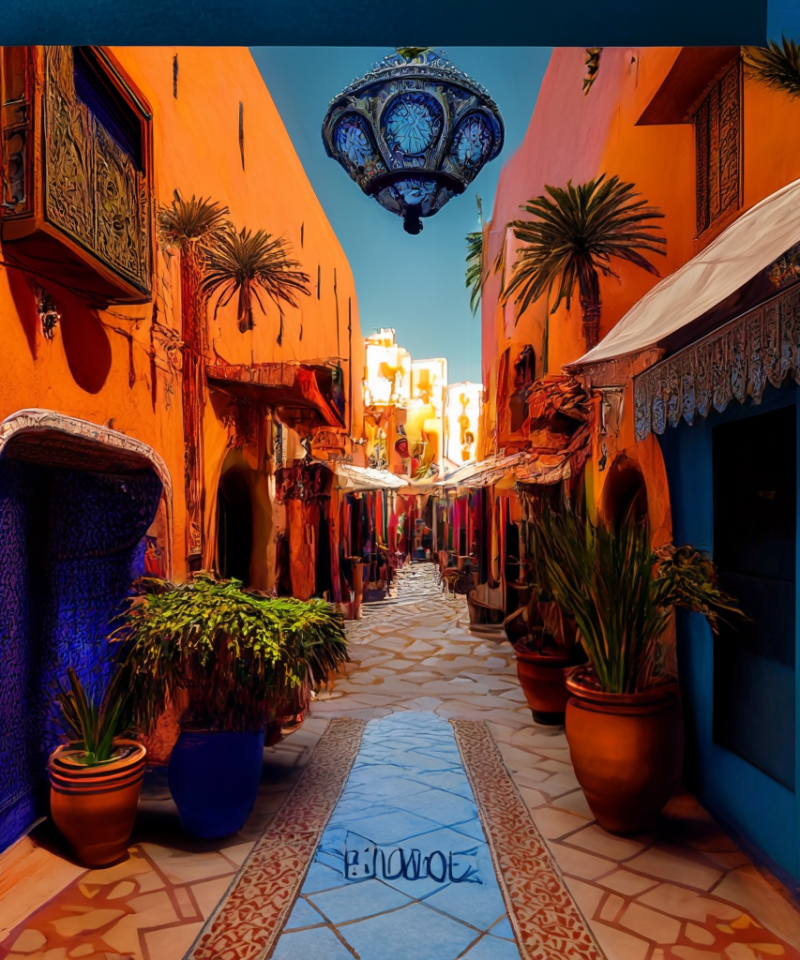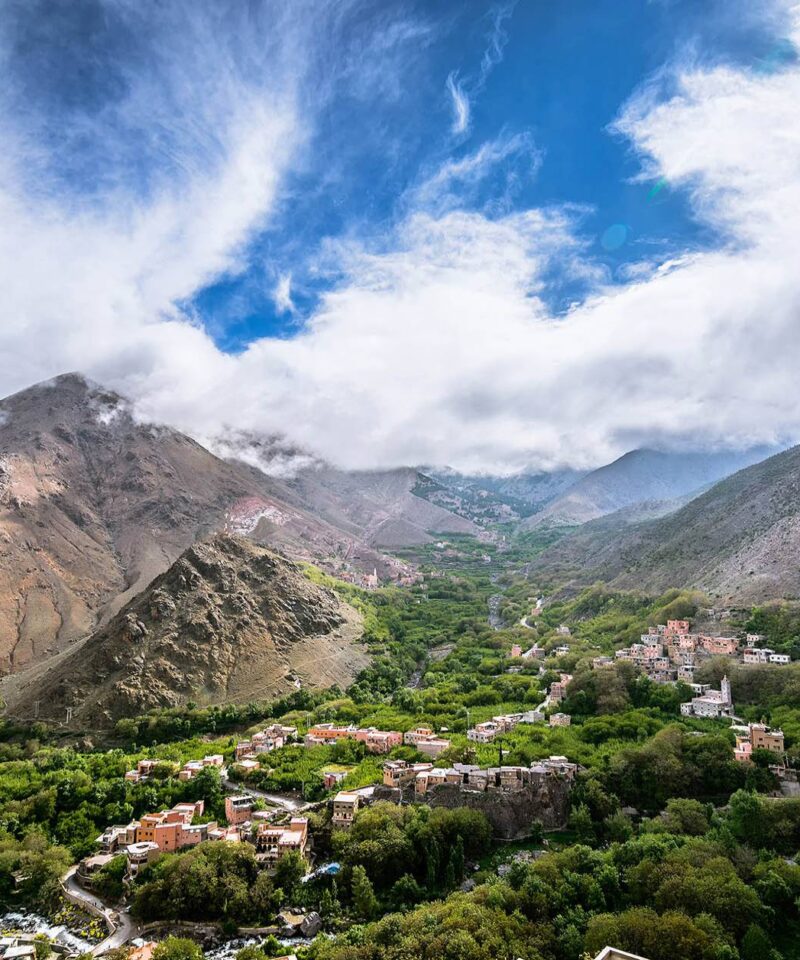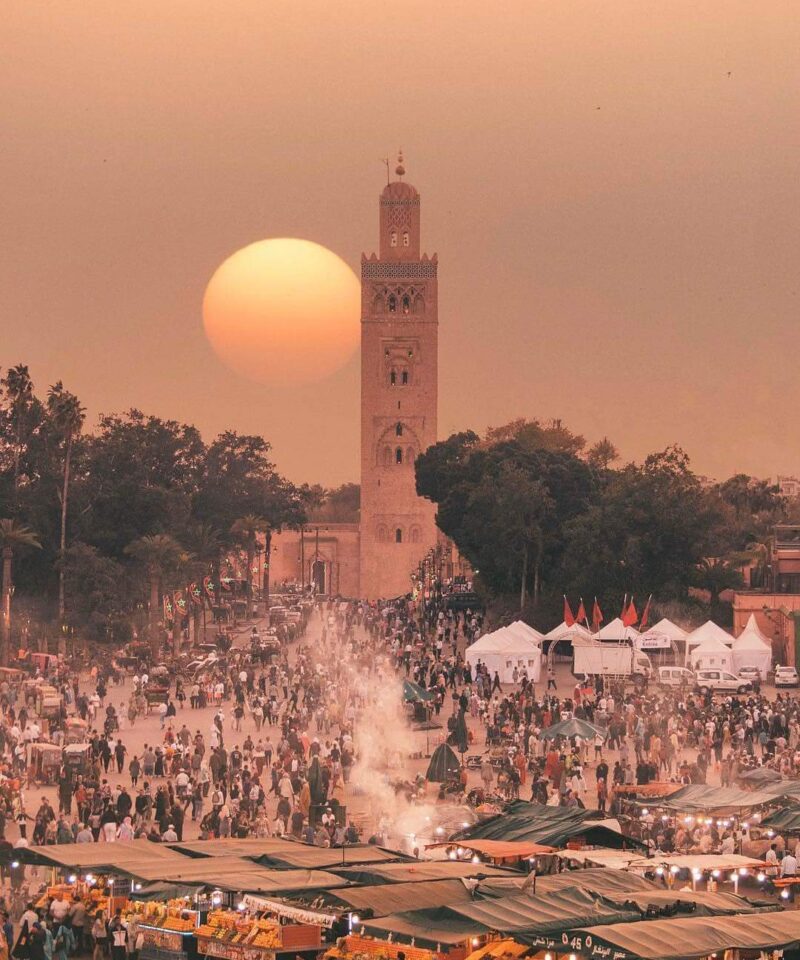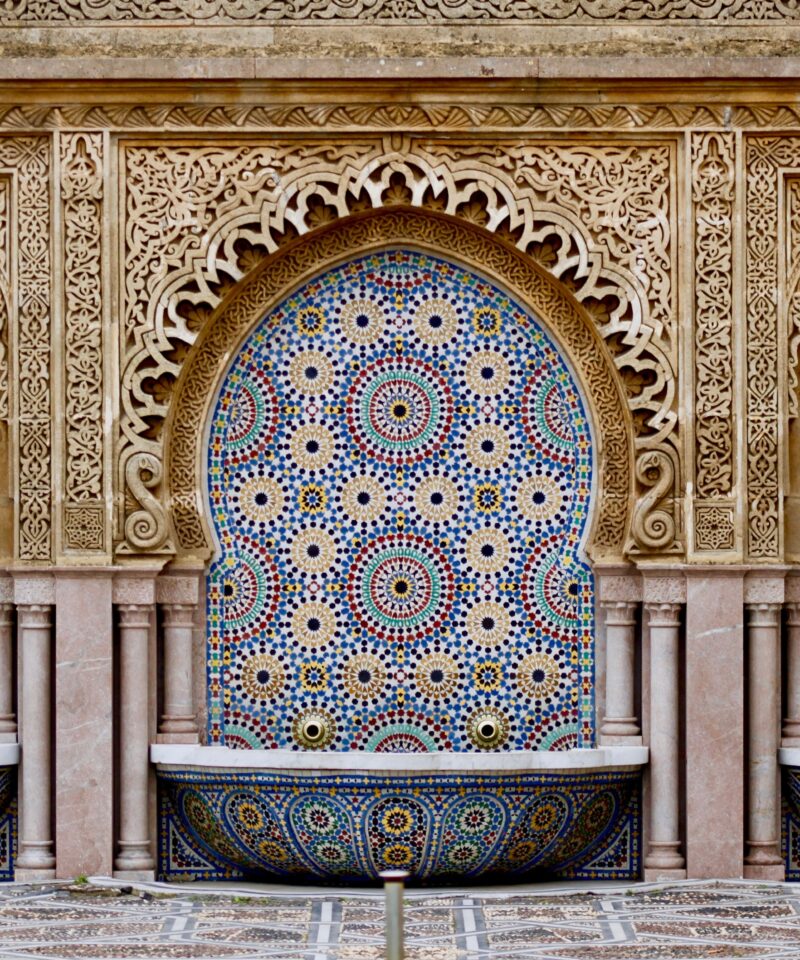1.820.3345.33
Contact@TravelTourWP.com
Why did the Greeks control Morocco? The seizure of Morocco in order to prevent the emergence of a strong and solid state that crowds them in the Mediterranean Sea, those areas that they seized, they would not turn those good things in which the region abounds, to themselves.
so they took over the cities and plains in the north of Morocco during the year 146 BC, they may be They may have taken over. Some Roman-Roman images appeared in Morocco, but these mountains were under the protection of the Berbers, and they were known for their strength and prevention.
The year 788 was marked by the birth of the first Muslim dynasty of Middle Eastern origin. In 791, the Moroccan State was created. Idriss I, descendant of Ali, son-in-law of the Prophet, flee Arabia to escape the massacre of his family and settled in Volubilis, eventually founding the city of ‘Fez’, which was designated, after he died in 792, as the capital of the Kingdom.
by his son, Idriss II, who succeed him. Idriss II took care of the construction of the city in 803 and died in 828. The administration of the Kingdom was entrusted to his sons, then to his brothers, while the city of Fez prospered economically. In 857 and 859 the city prevailed prodigious achievements, including mosques Quaraouiyine and Andalusian. At the beginning of the 11th century, the aura of the reign of the Idrissids reached Cordoba before the divisions in Muslim Spain caused their decadence and their disappearance in 1055.
The Almoravid Dynasty was a Berber Muslim dynasty that emerged in the 11th century and had a significant impact on the history of North Africa and Spain. Here’s an overview of the Almoravid Dynasty:
Origins and Rise to Power:
The Almoravids originated from the Sanhaja Berber tribes of the Sahara Desert in present-day Mauritania. Led by their charismatic leader, Abdallah ibn Yasin, they embraced a puritanical form of Islam known as the Maliki school of jurisprudence. Their religious zeal and military prowess allowed them to rapidly expand their influence.
Expansion and Consolidation:
In the 11th century, the Almoravids launched a series of successful military campaigns, first consolidating their power in Morocco and then expanding their territories into the Maghreb (Northwest Africa). They captured key cities such as Marrakech, Algiers, and Tunis, establishing their dominance over a vast area.
Control over Spain:
The Almoravids’ most significant conquest came in 1086 when they were invited by the Muslim rulers of the taifa (small independent Muslim kingdoms) in Al-Andalus (Islamic Iberia) to help repel the Christian Reconquista. The Almoravids crossed the Strait of Gibraltar and decisively defeated the Christian armies at the Battle of Zallaqa (Sagrajas).
With their victory, the Almoravids extended their control over much of Muslim Spain, including major cities like Seville and Granada. They aimed to impose their strict interpretation of Islam and restore order and unity in the fragmented taifa kingdoms.
Society and Administration:
The Almoravid rulers implemented a centralized administration system, imposing their religious and legal practices across their territories. They promoted education, built mosques, and sponsored scholars, contributing to the intellectual and cultural development of the region.
Decline and Fall:
In the 12th century, the Almoravid Dynasty began to face internal conflicts and external pressures. Their strict religious policies led to opposition and resentment among the local populations, and rival dynasties emerged in the Maghreb. Additionally, the Almohads, another Berber dynasty, rose to power and challenged their authority.
The Almoravids suffered a significant defeat against the Almohads in 1147 at the Battle of Alarcos, which marked the beginning of their decline. The Almohads gradually overtook their territories, and by the end of the 12th century, the Almoravid Dynasty ceased to exist as an independent political entity.
Legacy:
Despite their relatively short-lived rule, the Almoravids left a lasting impact on the region. They played a crucial role in the spread of Islamic reform and the consolidation of Muslim power in North Africa and Spain. Their architectural style, characterized by the use of adobe and decorative motifs, can still be seen in structures like the Koutoubia Mosque in Marrakech.
Moreover, the Almoravids’ influence on the subsequent Almohad Dynasty demonstrates the historical significance of their rule. The Almoravids laid the foundation for the rise of future Berber dynasties and the continued development of Islamic civilization in the region.
The Almoravid Dynasty remains an important chapter in the history of Morocco and the broader Muslim world, highlighting the complexities of political, religious, and cultural interactions during the medieval period.
The Almohad Dynasty is a Berber dynasty from the High Atlas, their name comes from the Arabic “Al Mouwahidoune”, and “unifiers” (those who claim the uniqueness of God.) Its founder was El Mehdi Ibn Toumart.
Abdel-Moumen, his disciple, took Marrakech as the capital, from which the construction of Koutoubia, then founded the Almohad Empire, and succeeded in unifying North Africa, but died in Rabat in 1163 before including Andalusia to his Empire. This glory returned to his successor Yacoub El-Mansour, victorious of the battle of Alarcos in 1195, against the Portuguese and the Spaniards.
Berber dynasty (nomadic Zenetes from the Upper Moulouya Basin). This Dynasty chose capital Fez, proceed to the creation of Fez El-Jedid and the construction of several medersas, among which Medersa El-Attarine, the Medersa Abou Inane, or Medersa Mérinide in Salé. The Merinid took advantage of the decline of the Almohad Empire to take control of the cities of Fez, Rabat, Sale and the fertile plains of Saiss and Gharb. Subsequently, the Merinid Sultan Abu Youssef Yacoub seized the city of Marrakech in 1269.
As the supreme leader of the Marinid dynasty, Abu El-Hassan then tried to reconstitute the Empire around 1331, and conquered Tlemcen in Algeria and Tunis in 1347, but without managing to keep Spain and Algeciras in 1340.
In 1348, the Black Death and the rebellions of Tlemcen and Tunis marked the decadence of the Marinids who fell to repress the Portuguese and Spanish, allowing them, also through their successors the Wattassides, to settle on the coast. The resistance was organized around the brotherhoods and marabouts from which emerge the Saadian dynasty.
The Wattasids belonged to the Berber tribe of Zenata, and they resided in the north of the Moroccan Sahara. They first appeared with the Marinids when they shared the rule with them, and then they drifted to expand and eliminated the Marinid rule in the year 1462 AD, and most of them had died in the massacre that the Marinids made, and Muhammad Sheikh came out of them The Mahdi, he was their first sultan, and perhaps what distinguishes the Wattasid state most are those revolutions that revolted against the Crusader intervention in the affairs of the Muslims and the Crusaders’ control over the holy places of Muslims, and the Wattasid rule continued until their last ruler fell in a battle with the Saadians in 1545 AD.
Shereefian dynasty (“Chorfa descendants of the prophet Mohamed) from the Draa Valley, Marrakech was their capital. From 1578, Sultan Ahmed Al Mansour Eddahbi sit his reign on important military victories, including the victory of the “Battle of the Three Kings” in Oued El-Makhazine; “The conquest of Timbuktu”, where he brought back gold and slaves, as well as “the construction of the palace El Badiî”, the development of the sugar industry and weapons … The reign of Ahmed Al Mansour Eddahbi ended in 1602 .
The Alawite Dynasty is descended from the Chorfa of Tafilalet, descendants of Imam Ali, who established themselves in the region, before establishing their authority over the whole country from 1666. The founder of the Dynasty and its spiritual leader Moulay Ali Cherif, as well as his successors (including Mohamed Ben Ali Cherif, proclaimed first king in 1640) reunited Morocco, thereby implementing a political and military strategy accordingly.
In 1672, King Moulay Ismaël exercised absolute power while continuing the work accomplished by his predecessors. The Sultan began by founding the city of Meknes, a city which he later designated as the capital of the Kingdom. After taking over Larache and Tangier, Moulay Ismaël eliminated the local political and religious powers and thus found the Cherifian Empire. His power will be extended to Senegal, and he ordered the establishment a network of fortresses throughout the territory. A network from which an army operated. He then devoted himself to establishing fruitful diplomatic relations. with foreign countries, especially in the time of Louis XIV and James II of England.
After the death of Moulay Ismaïl in 1727, Sidi Mohamed Ben Abdallah (Mohamed III) succeeded him. A fervent Muslim, he thought only of bringing peace and security to the country. He was therefore welcomed as a providential man, and his proclamation assumed the character of a true plebiscite. As soon as he was invested, he lightened the taxes, struck a sound currency and reconstituted a new army recruited from the Guich tribes.
Simultaneously, he worked to fortify the Moroccan ports and had took back Mazagan from the Portuguese (1769). He concluded peace with the Spaniards and an agreement on prisoners with Louis XV. Considering that Morocco needed to strengthen its relations with the outside world to compensate for the loss of the Triq-Sultan (strategic crossing), it signed trade treaties with Denmark, Sweden, England and the United States. On this occasion he received a very fine letter from George Washington, proposing to conclude a treaty of friendship between their two countries.
Sidi Mohamed Ben Abdallah was behind the foundation of Mogador, whose construction he entrusted to the French architect Gournot. No doubt he would have done much more if he had not been hampred by insufficiency of funds. When he passed away in 1790, Morocco was better off than it was before his reign.
Moulay Slimane Became then successor of Moulay Yazid Ben Abdallah, who would have reigned only for a period of two years (1790-1792). He drived out the Turks of Oujda, built several mosques and madrassas and did not fail also to come to the aid of Algerians during the Battle of Isly.
By the mid-1800s, at a time when the influence of the Ottoman Empire was in decline, France and Spain began taking a great interest in Morocco. The Algeciras Conference (1906) that followed the First Moroccan Crisis formalized France’s special interest in the region (opposed by Germany), and the Treaty of Fez (1912) made Morocco a French protectorate. Spain gained authority over Ifni (to the south) and Tétouan to the north.
In the 1920s the Rif Berbers of Morocco, under the leadership of Muhammad Abd el-Krim, rebelled against French and Spanish authority. The short-lived Rif republic was crushed by a joint French/Spanish task force in 1926.
In 1953 France deposed the nationalist leader and sultan Mohammed V ibn Yusuf, but both nationalist and religious groups called for his return. France capitulated, and Mohammed V returned in 1955. On the second of March in 1956, French Morocco gained independence. Spanish Morocco, except for the two enclaves of Ceuta and Melilla, gained independence in April of 1956.
Mohammed V was succeeded by his son, Hasan II ibn Mohammed, upon his death in 1961. Morocco became a constitutional monarchy in 1977. When Hassan II died in 1999 he was succeeded by his thirty-five-year-old son, Mohammed VI ibn al-Hassan.
Discover the magic of Morocco with Show Me Morocco! From the vibrant streets of Marrakech to the stunning Atlas Mountains, the mesmerizing Sahara Desert, and the captivating Imperial Cities, our tours offer an unforgettable journey. Experience trekking, hiking, desert trips, and immerse yourself in the rich culture and history of this enchanting country. Let us show you the best of Morocco in an adventure of a lifetime!





